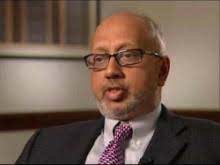Interview with Professor Venkat Venkatraman on digital strategy

“What’s your relevance in the digital future? Where will you add value when value delivery and capture is fundamentally shaped by digital technologies?”
Prof. Venkat Venkatraman
Key take away: How should incumbent businesses approach digital transformation?
- Every incumbent should map their future landscape around three types of players: traditional incumbent leaders, digital giants (such as Amazon, Alibaba), and technology entrepreneurs (such as Airbnb, Didi)
- Check what digital business experiments that you are doing now—are they limited to enhance your current business model or to redefine and challenge your current business model?
- Ask yourself, what’s your relevance in the digital future—where will you add value when the value delivery and capture is fundamentally shaped by digital technologies?
Interview
Omar Valdez-de-Leon: First, a little bit about you and your work
Professor Venkatraman: I am professor at Boston University Questrom School of Business. My official title is David J. McGrath Jr. Professor in Management—where I hold appointments in the information systems and strategy & innovation departments.
My research, teaching and advisory work focus on how companies make the best use of digital technologies to design winning strategies. I believe that we are at inflection point: rules designed and perfected in the post-industrial age are showing their limits as digital companies define new ways of creating and capturing value. The implication is that today’s leaders are vulnerable if they continue to believe that future is extrapolation of the past. So, my work is on understanding the opportunities and challenges of winning in the digital future—where every industry (and by extension every company) is fundamentally organized with digital functionality at the core.
“Today’s leaders are vulnerable if they continue to believe
that future is extrapolation of the past”
Omar Valdez-de-Leon: Digital Strategy as ‘something IT does’ is still somewhat prevalent in many businesses. What is your view on this?
Professor Venkatraman: What you say is unfortunately true in many cases. It’s because the senior leaders have historically treated IT as a specialist function and felt comfortable to delegate this domain of responsibility to the IT organization. And today, many are appointing Chief Digital Officers to do the same.
My view is that digital is not a function. Digital is not the new updated label for IT. Digital is pervasive: it impacts major product categories due to functionality such as sensors, Internet of Things and cloud connectivity; it impacts major processes and supply chains due to developments such as blockchain, 3D printing, drones and related innovations; it impacts how we deliver services with social and mobile apps as well as cloud functionality.
I advise business leaders not to look at specific technologies but to look at how significant business (and consumer) problems could be solved with digital technologies deployed at scale and speed.
Omar Valdez-de-Leon: You argue that all businesses are already digital, but most still operate with analogue play-books. How can incumbents businesses make the transition?
Professor Venkatraman: A few key points to bear in mind:
- Every incumbent should map their future landscape around three types of players—traditional incumbent leaders; digital giants (such as Amazon, Alibaba, Apple, Alphabet, Baidu, Microsoft and others); and technology entrepreneurs (PayPal, Tesla, Uber, Airbnb, Didi, etc.). Even if the digital giants and technology entrepreneurs are not yet active, a thought experiment is necessary—how could digital giants influence your sector? Where could technology entrepreneurs innovate and disrupt status quo?
- What are the digital business experiments that you are tracking (being carried out by others)? What are the digital business experiments that you are doing now—are they limited to enhance your current business model or to redefine and challenge your current business model?
- What’s your relevance in the digital future—where will you add value when the value delivery and capture is fundamentally shaped by digital technologies? Once incumbents recognize that their future role may not be guaranteed by just extending past (analogue) business model, the urgency to adapt becomes obvious. I say that “digital business transformation is the single biggest leadership issue for this generation of managers.”It is because of the importance and urgency of transitioning from a business model perfected in the industrial age to exploring and refining business models for the digital age.
“Every incumbent should map their future landscape around
three types of players—traditional incumbent leaders; digital
giants (such as Amazon, Alibaba); and technology entrepreneurs
(Airbnb, Didi, etc.)”
Omar Valdez-de-Leon: What would you suggest are the 3 key levers business leaders can use to kick-start or accelerate their digital transformation?
Professor Venkatraman: Business leaders must begin by creating a compelling vision of the company’s relevance in the digital future—e.g., new CEO of Novartis positioning the company as a medicine plus data company.
This is to be inspirational and pragmatic in terms of the tough decisions (including cannibalization of current models and resource reallocations) needed to achieve the vision. This is the necessary first step and must start from the top.
Second, pull together a cross-sectional team composed of what I call as dreamers, designers, doubters and doers. (here’s more details on this). The team should be given the mandate to create the future vision and support it with a set of experiments that could be carried out quickly.
Third step is to get a team to focus on the human talent needed to work with powerful machines to architect the organizational capabilities. I say that the future organizing is at the intersection of smart humans and powerful machines. Embark on that organizational transformation as quickly as possible.
Fourth is to think about external ecosystems and identify your roles in them to make sure that you are part of the group that defines the rules of value creation and capture.
“Be inspirational and pragmatic in terms of the tough
decisions (including cannibalization of current models
and resource reallocations)”
About Prof. Venkatraman:
N. Venkat Venkatraman is the David J. McGrath Jr. Professor of Management at Boston University Questrom School of Business. Previously, he taught at MIT Sloan School of Management (1984-1993) and London Business School (1999-2001). He is the author of The Digital Matrix: New Rules for Business Transformation through Technology.
Venkat’s research, teaching and consulting focuses on how companies win in the digital age—where products, processes and services are shaped and supported by digital technologies.
He was awarded the 2004 and 2006 IBM Faculty Fellowship for his work focusing on digital business challenges. His research has won numerous awards and is at the top of the most cited researchers in digital strategy and management according to Google Scholar.
He has consulted and/or delivered workshops for many corporations in the USA, Europe and South Africa including IBM, Microsoft, BP, Merck, Ericsson, ABN-AMRO, Zurich Financial, McKinsey & Co., Federal Express, Canal + and others. He recently served on the Technical Advisory Committee of Canal + France focused on disruption and innovation in the digital media sector. He holds a B.Tech degree from Indian Institute of Technology, Kharagpur (1976), an M.B.A. from Indian Institute of Management , Calcutta (1979) and a Distinguished Alumnus award; and Ph.D. from the Katz School of Business at the University of Pittsburgh (1985).
